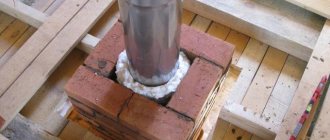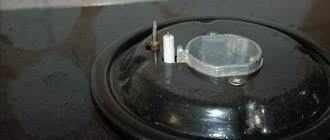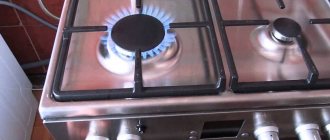A domestic gas explosion in Khimki claimed several lives and destroyed four apartments. Experts are looking into the reasons. Violation of safety rules is probably to blame.
On the afternoon of March 19, an explosion occurred in a nine-story brick building on Zelenaya Street. The ceilings of the eighth and ninth floors collapsed, damaging four apartments. Firefighters found the bodies of three dead, seven people were injured.
The preliminary cause is a malfunction in household gas equipment. The house manager said that gas equipment in the apartments was checked as planned. The last check was in January.
Security measures
Try to protect the device from small children. To do this, you can install a protective screen near the handles of the gas stove or protective caps on them.
Under no circumstances should gas devices be used as heating appliances; clothes, mushrooms, etc. should not be dried over them.
Do not place flammable objects near the stove, keep aerosols, lighters, etc.
There should be small gaps between the walls of the stove and the furniture to ensure natural ventilation. This is necessary so that the stove and oven do not overheat.
You cannot cover the gas supply systems to the stove with false walls or put them in boxes. Pipes and valves must be freely accessible.
Watch the hose going to the stove; it should not be pinched or twisted.
When you leave home or at night, turn off the gas supply valve to the stove.
Ventilation grilles in the kitchen must not be closed. Gas is twice lighter than air, it rises up and leaves through ventilation pipes; its path cannot be blocked. With properly functioning ventilation, the accumulated gas is quickly released outside into the atmosphere.
Keep the stove clean; it is recommended to clean the burners regularly.
Never leave a lit stove unattended, especially when cooking over low heat.
Question answer
How to reduce the number of domestic gas explosions?
Troubleshooting a gas stove
Before starting repairs, it is important to know that all gas fittings are made of alloys that do not produce sparks upon contact. During restoration work, it is worth using similar materials.
The tools you will need are pliers, an adjustable wrench for the stove and valve, and a gas wrench.
Problem #1 - burner malfunctions
When the smell of gas appears as a result of the extinguished flame, it is necessary to immediately close the valve and ventilate the room. This situation is considered an emergency, so you need to immediately open the windows wide. When the burner has cooled down, it is important to thoroughly blow it out and clean it of any remaining food or grease.
During operation of the stove, carbon deposits accumulate on the burners, which can give the flame a yellow tint. This can be misleading and create the appearance of a malfunction where there is none.
A working burner provides an even blue flame. If yellow or red tongues slip through, this indicates a burner malfunction and the possibility of a fuel leak
After thoroughly cleaning the burner, you need to put it back in place, light it, and check its functionality.
If the cause of the malfunction is any defect, it is worth replacing the burner with a new one.
Problem #2 - broken connecting hose
Hoses used to connect gas are sold at specialized retail outlets. Visually, they differ from the others by their bright yellow shell.
The gas supply hose and connecting elements are distinguished by a bright yellow braid. This allows you to distinguish elements suitable for creating a gas pipeline from other similar products
When the cause of the leak is a crack in the hose, it is worth replacing it. After all, carrying out repairs will provide a short-term effect and the unpleasant smell will very quickly appear again.
Problem #3 - Leakage in the stopcock area
To check the operation of the unit, it is necessary to apply a soap solution to the pipe. If a leak is detected, you must immediately shut off the gas supply and call professionals. If you have a new valve or flax tow, the technician will promptly replace the gas valve.
Once installation is complete, the connection is tightened until the valve is in the desired position. Correct installation is determined by repeated application of the soap solution.
The shut-off valve is located on a pipe connected to the central line. The problem may also be in the valve where the stove connects to the cylinder. If the connection is not sealed, a gas leak may occur.
To extend the service life of the connection, it is painted with oil paint. After the composition dries, a dense film is created that can reduce the likelihood of leakage.
Modern protection systems
The latest gas stoves are equipped with useful features, including those that increase the safety of household appliances. One of the most important is gas control. This controller shuts off the gas supply to the burner if the flame goes out for some reason. That is, now you don’t have to be afraid of escaped milk or coffee, but you still need to keep an eye on the stove.
Electric ignition. Ignition device using an electric spark, without matches or lighters. Mainly for convenience and to avoid getting burned during the ignition process.
Child protection. Manufacturers install protective caps on stove ignition handles. There are also special buttons that block all functions of the stove so that children cannot use them.
Initial actions
If you notice an unpleasant propane smell when you turn on your appliances, the first thing to do is turn off the valve on the riser. Further experts recommend:
- open all windows in the apartment;
- remove people from the premises;
- check that there is no open source of fire;
- Call the gas man and leave the house.
It is also recommended to inform your neighbors about the problem. It is possible that the source lies in a massive leak due to a damaged central pipe.
How to detect a leak
There is an old folk method: moisten the joints of gas communications with soapy water. Soap bubbles will form at the leak site.
You can also smell a gas leak. In fact, household gas has no odor, but a special substance with a characteristic odor is added to it; it is the aroma of ethyl mercaptan that we mistake for the “smell of gas.” But, unfortunately, a small gas leak may not be detected, and even 5% of gas in the air already leads to severe poisoning and threatens an explosion. In addition, many people now have problems with their sense of smell, so relying too much on the smell of gas will not work. It is better to check the equipment in a timely manner.
Time to tighten the valves. When will electric stoves replace gas stoves? More details
Self-diagnosis
Technical service technicians are confident that without knowledge of the design of the equipment, as well as without experience in servicing it, it is impossible to carry out repairs. However, you can carry out preliminary diagnostics on your own and find a possible source. This will significantly simplify the engineer’s task and shorten the time required to complete the work (the specialist will not need to spend time on full diagnostics and searching for the necessary parts, since he will select them in advance).
First you need to determine under what circumstances a propane leak occurs:
- the gas begins to poison the air only when the burner is on;
- Propane flows continuously, even when the burner is turned off;
- odor appears when the stove is in use;
- leaks periodically from non-working burners while neighboring burners are operating;
- The smell of propane is noticeable a few minutes after switching on.
The initial inspection can be done on your own in three ways:
- if when you open the oven door, the smell becomes stronger, then the problem is in the faucet;
- if you move the stove away from the wall, the “aroma” of propane begins to intensify, then the defect should be looked for in the connecting parts or in all communications;
- If the device is turned off, but the gas continues to spread, then you should check the quality of the connection between the device and the hose.
Do not disassemble the device to determine the defect more accurately. This can lead to additional damage, and also increases the risk of intoxication of the body from constantly being near the source of a leak or explosion.
Why might gas smell during operation?
In addition to the problem described above with a defective route between the tap and the burner, owners often encounter another problem. This is especially true for private houses where cylinders are used. Sometimes a gas station may fill a container with low-quality propane containing a large amount of sulfur. When burned, it emits an unpleasant odor, which is different from the additives in natural gas. Hydrogen sulfide creates smoke on the burners. Pay attention to this point. If the signs are the same, replace the gas with a new one, write a corresponding complaint to the regulatory authorities for a refund.
General information about the use of gas for domestic purposes
Gas is used for various purposes: as fuel for kitchen stoves, gas generators, gas water heaters, water supply boilers, heating stoves, etc.
Natural gas is mainly used as a heating component. It can be used to heat both residential and industrial premises. A slightly smaller volume of gas is used to light gas stoves. The smallest percentage goes to refuel cars. Gasoline prices are constantly rising, so many motorists are switching to gas fuel. The machine is equipped with special equipment - a gas installation, thanks to which it is refueled with natural gas. Such installations are becoming more and more relevant, but most often they can be found in trucks and buses. This solution helps not only to save on refueling, but also to make the environmentally correct choice - emissions from natural gas are less harmful than from gasoline.
Natural gas is also used in autonomous gas supply systems. Gas holders (special containers) are also supplied with liquefied natural gas. Their refueling should be carried out only by highly qualified specialists. For hard-to-reach gas tanks, hoses up to 80 meters long are provided. Gas supply from a gas carrier can be carried out independently in a tank; for this purpose, equipment has been installed at the facilities. Gas tanks are filled to only 85% of the nominal volume. Therefore, this makes it possible to ensure the operation of autonomous gas supply systems as safely as possible.
Pork belly in liquid smoke
To cook pork belly you will need:
- Brisket;
- Salt;
- Water;
- Liquid smoke 1 tbsp. spoon;
- Spices to taste;
- Onion peel;
- Bay leaf.
To prepare the dish, you need to cut the brisket into small pieces that will fit comfortably in the pan. Wash the onion skins and place them on the bottom of the pan; they will give the brisket a wonderful taste and golden color. We put the husk at the very bottom, sprinkle salt on top and put a bay leaf. After that, add the brisket and a spoonful of liquid smoke. Place the pan on high heat for up to 10 minutes.
After this, you need to give the brisket 6-8 hours to cool and absorb all the seasoning and the effect of the liquid smoke. After this, it needs to be rubbed with garlic and can be eaten. The dish is ready.











